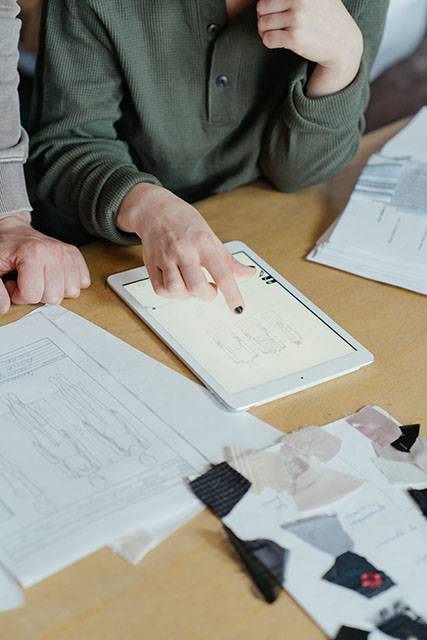On 1st July 2021, a sourcing merchant of an immensely popular brand mailed a tech pack to a denim factory.
The factory did not understand and wrote for clarification, but the merchant slept on the query. After seven days, in frustration, the sourcing manager called complaining about the factory’s incompetence and bad merchandising.
For my office, this was a profoundly serious issue. Frantic calls were made only to understand the problem was in the “so-called” tech pack.
Two tech packs, each of 80 MB were sent. Yet the factory did not act upon it.
Which brings us to the question of what was wrong with the 80 MB file?
Before we explore further, let us first understand what is a tech pack?

A Tech Pack is a blueprint that tells a factory, in a special language of drawing and terminology, how your finished garment should look and how it should be made.
Did you know that as much as 9 out of 10 times, fashion designers and entrepreneurs around the world send incomplete tech packs to request a manufacturing quote?
Imagine walking into a Starbucks and just ordering coffee with milk. The counter boy would probably ask what kind of milk do you want, also the size (‘Tall’, ‘Grande’ or Venti’), decaf or regular? how much milk (cappuccino, latte)? Even if it is just a simple coffee it is much better to be specific so Starbucks can make your coffee as quickly as possible and to your liking.

Imagine if the information were this incomplete when producing something as complex as a technical pack for a clothing item or accessory you wish to produce.
The tech pack is the contract between the designer and the factory, and they achieve three main objectives:
1) It communicates all the specifications and details of the designed garment or accessory which needs to be produced.
2) It clarifies what needs to be included in the price.
3) It prevents confusion and misunderstandings.
The 80 MB files had everything except the above three points.
A fashion designer should not put the factory in a position where they have to guess what to do. Therefore, all the details need to be included in the tech pack. If the factory has to guess, and they guess wrong, then both parties will be frustrated.
The main contents of a tech pack should be:
- A Pattern
- Testing Details (FPT and GPT requirement)
- Costing Details
- Quality requirement
- Technical sketch with specs sheet.
- Workmanship and stitching instructions
- Sample of Fabric, color combination for trims for different base colors
- Packaging Information
- Bill Of Material (BOM)
Updated with comments on garment samples submitted to buyers. Mainly size set sample and PP sample comments.
Some buyers also include mini marker and fabric consumptions in the apparel tech pack.

Why are the above details important? Does the factory need these details?
The main goal of a tech pack is to minimize the number of samples needed. A clear and comprehensive tech pack makes it more likely for the manufacturer to create a garment that perfectly matches your vision in the first sample.
When problems happen during production both sides blame each other. In fact, if the tech packs are accurate and complete then the problem and solution will present itself within the tech pack. Either the designer made a mistake in the tech pack, or the factory misunderstood the tech pack. The tech pack acts as a common reference point to resolve the problem.
A factory that accepts an unclear or undescriptive tech pack will interpret the best way to construct your product. In all our years working closely with product companies and factories, we have never heard a story of a factory being able to successfully interpret someone’s product vision from poor or unclear design documents. The result is always a series of bad samples, revisions and months wasted.
And this is exactly what happened in our case. The Brand lost critical days.
The tech pack acts as a common reference point to resolve the problems.
RELATED TOPICS:#Apparel,Sanjay Lal
Leave a comment
Our email address will not be published. Required fields are marked *







1 Comments
AartiAug 28, 2021 at 09:34 am
Although I am not from d fashion industry.. but thanks to ur articles..I am an enlightened and informed soul now..Kudos to our extensive research ..in diverse garment related fields..God bless...and looking forward to many more ....